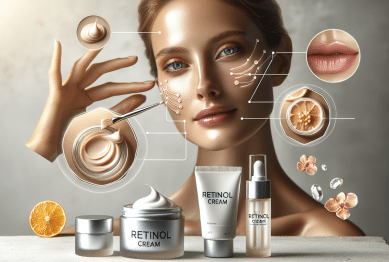Time away from work enhances creativity — and it’s not just a vacation perk. In 2025, companies and individuals are rethinking wellness as not just rest, but a powerful driver of performance. The biggest shift? Recovery isn’t optional anymore — it’s essential. This article dives into the science, strategy, and real-world changes that prove time off is no longer a luxury — it’s a creative superpower.
When employees disconnect fully and give their minds a break, time away from work enhances creativity like nothing else. Modern research shows that deep mental rest unlocks innovation, problem-solving, and focus — and forward-thinking organizations are catching on.

The 2025 Wellness Evolution: Rest Is Now Performance Strategy
Over the past two years, workplace wellness has transformed. Mental health days, company-wide recharge weeks, and even paid “creativity sabbaticals” are no longer fringe perks—they’re part of performance strategies in leading companies.
What’s driving this change? The explosion of burnout among remote and hybrid workers, coupled with research that shows time away from work enhances creativity, focus, and problem-solving capacity. Employers that embrace this shift are seeing real ROI in innovation and retention.
In 2025, employers from Spotify to small startups are experimenting with mental health unbooked days—scheduled recovery times that are protected and enforced like major deadlines. The goal is not just preventing stress, but cultivating creativity by giving the brain space to wander, ideate, and connect dots in new ways.
Creativity Peaks After Rest, Not During It
The Neuroscience Behind “Doing Nothing”
One of the most compelling discoveries in modern neuroscience is that creativity is often sparked not during focused work—but in moments of mind-wandering. This is tied to the brain’s default mode network, which activates when we are at rest, not actively solving problems.
When individuals take time off and truly detach, this part of the brain becomes more active, encouraging divergent thinking and unexpected connections between ideas. In plain terms: breakthroughs often come after rest, not while pushing harder.
The Evidence Is Clear
In a landmark longitudinal study, researchers found that creativity didn’t peak immediately after vacation—it increased significantly two weeks afterward. Employees reported better idea generation, stronger focus, and improved problem-solving when they had fully disengaged from work during time off (Syrek et al., 2021).
Similarly, a 2025 meta-analysis covering over 30 global studies confirmed that well-being and creative capacity improve significantly when individuals take extended breaks, particularly if they incorporate physical activity and novelty during time off (Grant et al., 2025).
3 Proven Ways Time Off Unlocks Creative Potential
1. Complete Digital Disconnection
Being away from work doesn’t help much if you’re still checking Slack or scrolling through your work email. True disconnection—ideally for 5–7 days or more—frees up cognitive resources, reduces stress hormones, and supports the brain’s natural creative cycles.
In one study, employees who disconnected from digital work entirely saw a 23% improvement in idea fluency post-break compared to those who remained partially connected.
2. Immersive, Non-Work Activities
Time off that includes novelty—like travel, cooking classes, nature hikes, or cultural experiences—stimulates creativity more than passive rest. These activities light up different brain regions and help individuals return to work with fresh perspectives and richer creative insights.
Even short breaks packed with active recovery, such as a weekend retreat or unplugged camping trip, were linked to significant increases in cognitive flexibility and ideation rates.
3. Reflection and Intentional Downtime
Many people journal or sketch casually on vacation, and studies show this reflection strengthens post-break creative insight. The mind connects ideas during this downtime, often resolving work problems in the background. Just 10 minutes of daily unstructured thought or writing can improve both emotional clarity and idea generation.
What Companies Are Doing to Support This
Company-wide Mental Health Days
Tech firms like Asana and Adobe now offer quarterly company-wide mental health days. These are mandatory recovery periods that everyone observes, which removes the pressure to “catch up” after taking time off alone.
These days often include optional guided meditations, no-email days, and full meeting shutdowns to allow space for real rest. Teams return more aligned and energized, and internal surveys show improved creativity scores post-break.
Paid Mini-Sabbaticals
In industries that depend on innovation, employers are offering mini-sabbaticals: 2–4 weeks of paid time off every few years, often used for creative travel or learning experiences. These programs are popular among creative departments, R&D teams, and leadership tracks.
Companies say these breaks encourage long-term loyalty and prevent burnout in high-performing staff. Most importantly, they return with renewed energy and new ideas that benefit the whole team.
Recharge Policies Tied to Innovation Metrics
Progressive organizations are now linking PTO usage to innovation outcomes. Employees who take regular time off are measured not just on task completion, but on their contribution to innovation, new ideas, and cross-functional collaboration post-vacation.
HR departments track how many new projects or creative contributions follow recovery periods. This is shifting the cultural norm: taking time off isn’t just allowed—it’s expected for high creative performance.
Practical Tips for Individuals
You don’t need a 6-week sabbatical to tap into this benefit. Here’s how professionals can make their time off truly count:
-
Plan true disconnection: Use autoresponders and block off calendar time. Tell your team your time off is non-negotiable.
-
Avoid passive time: Instead of binge-watching, try immersive hobbies like pottery, kayaking, or reading fiction. These spark the imagination far more effectively.
-
Journal your ideas post-break: Keep a notepad or digital file open during your first week back. Creativity often hits days after you’ve returned.
-
Micro-breaks during the day: Use 10-minute “booster breaks” throughout your workweek to keep mental energy high and prevent creative fatigue.
-
Negotiate for structured time off: If your role doesn’t already allow deep recovery, present research-backed cases to management. Many leaders respond well to data on performance gains.
Why This Matters for the Future of Work
As we face rising burnout, fast-changing industries, and constant cognitive overload, creativity is becoming one of the most valued workplace skills. But creativity doesn’t come from pressure—it comes from freedom.
Organizations that understand this—and individuals who prioritize structured disconnection—will lead the next generation of innovation.
When time away from work enhances creativity, it’s not a luxury. It’s a leadership tool.
Key Takeaways
-
Time away from work enhances creativity when rest is complete, intentional, and varied.
-
Creativity peaks 1–2 weeks after breaks, especially when physical activity and reflection are included.
-
Leading companies offer mental health days, paid sabbaticals, and innovation-linked PTO.
-
Professionals can spark creative breakthroughs with even short, well-structured breaks.
References
-
Syrek, C. J., de Bloom, J., & Lehr, D. (2021). Well Recovered and More Creative? A Longitudinal Study on the Relationship Between Vacation and Creativity. Available at: https://frontiersin.org (Accessed: 4 August 2025).
-
Albulescu, P., Macsinga, I., Rusu, A., Sulea, C., Bodnaru, A., & Tulbure, B. T. (2022). “Give Me a Break!”. Available at: https://www.ncbi.nlm.nih.gov (Accessed: 4 August 2025).
-
Taylor, W. C., Pepkin, K. L., & colleagues. (2010). Booster Breaks: Improving Employee Health One Break at a Time. Available at: https://en.wikipedia.org (Accessed: 4 August 2025).









